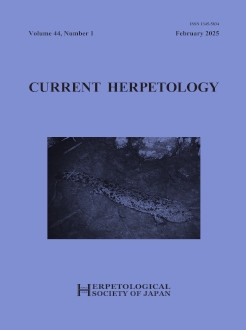Butterfly lizards of the genus Leiolepis Cuvier, 1829 are ground-dwelling lizards in the family Agamidae. In Thailand, widespread population declines occurred as the results of overhunting and anthropogenic habitat alteration. This was particularly apparent in the common butterfly lizard, Leiolepis belliana (Hardwicke & Gray, 1827). Despite numerous conservation efforts, fundamental knowledge regarding the population genetic structure and genetic diversity has been limited. This study utilized the mitochondrial cytochrome b gene to investigate the population genetic structure of L. belliana on islands in the eastern Gulf of Thailand, where both natural and introduced populations occur. Tail tissue samples were collected from nine island and mainland localities. Sequence analyses (n=59; 1,100 bps) revealed 11 haplotypes, with haplotype diversity (h) and nucleotide diversity (π) within each locality ranging from 0–0.867 and 0–0.0099, respectively. These values were comparable to those of other butterfly lizard species, but relatively high compared to other critically endangered lizard species. Significant genetic differentiation and distinct genetic structure were observed among populations on most of the islands. The phylogenetic tree depicted close genetic relationships between L. belliana specimens from the eastern Gulf of Thailand and those from southern Thailand, suggesting that the population genetic structure of L. belliana was shaped by both historical geographic events and human activities. These findings highlight the importance of genetic assessment in the formulation of conservation strategies by clearly defining conservation units and providing valuable insights into population genetic structure and variation.
BioOne.org will be down briefly for maintenance on 14 May 2025 between 18:00-22:00 Pacific Time US. We apologize for any inconvenience.
How to translate text using browser tools
20 February 2025
Genetic Diversity and Population Genetic Structure of Common Butterfly Lizard Leiolepis belliana (Hardwicke & Gray, 1827) on Islands in the Eastern Gulf of Thailand: Implications for Conservation
Nutthanun Khantasup,
Thongchai Ngamprasertwong,
Nontivich Tandavanitj
ACCESS THE FULL ARTICLE

Current Herpetology
Vol. 44 • No. 1
February 2025
Vol. 44 • No. 1
February 2025
Butterfly lizards
Eastern Gulf of Thailand
genetic diversity
population genetic structure




